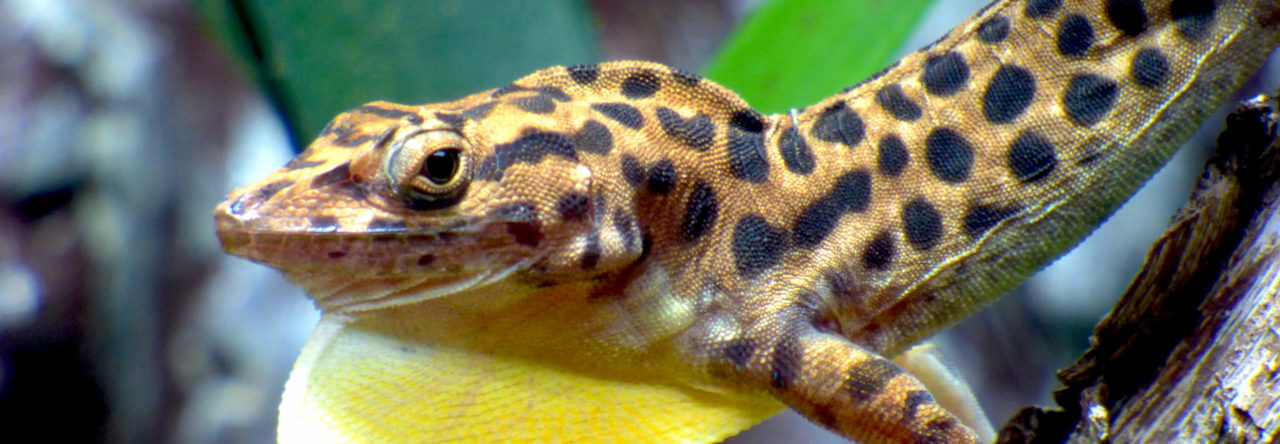On a recent trip to Grand Cayman I was interested in the UV reflecting dewlap of Anolis conspersus. The dewlaps of these lizards appear blue to our visual system but are maximally reflective in the ultraviolet. While anoles have 4 cone types (ultraviolet, blue, green and red sensitive), humans have only 3 and cannot see UV light so to understand what these lizards look like in the UV, we have to use specialized camera equipment. The photo to the right shows what a displaying A. conspersus looks like to our camera system when imaged in the human visual spectrum as commercially available digital cameras also have only three channels corresponding to the three human cone types. Presumably if we were also able to see in the ultraviolet as many other animals can, our cameras would be designed with a separate channel for ultraviolet.
These images of the lizard in the UV show clearly the regions of the dewlap and that are highly UV reflective and the pattern of UV reflectance in other areas. One somewhat interesting finding is that while the dewlap scales are highly reflective across the human visual spectrum (which is why they appear white to our eyes) they reflect very little UV light. The lower photo is a monochromatic image (both the red and blue channels in this camera are sensitive to UV so the raw image appears purple) that makes it a bit easier to see brighter areas as white. Note how bright the dewlap appears relative to the reflectance standard, when imaged in the human visual spectrum a similar monochromatic image of the dewlap would appear very dark. I believe this shows the potential value of UV photography when studying Anolis dewlap patterns. While the UV nature of the A. conspersus dewlap is uniform, it’s likely that other species have patterns visible in the UV we’ve previously missed. We have also used this UV photography setup in SE Asia to image Draco flying lizards and other species, some of which have patterns that are visible only in the UV band. The goal of this project is to make a camera system with pixel channels similar to the four cone types found in Anolis lizards and birds to image whole organisms and really “see” the patterns organisms experience with their visual system as they would see them. As Anolis visual pigments and their associated oil droplets appear to be fairly conserved, this seems to be achievable.
Another surprise (to me) was the large number of A. conspersus on Grand Cayman using lights at night to feed. I’ve spent many months doing fieldwork in SE Asia and Central America and can’t recall seeing this sort of thing with other diurnal lizard species, but on Grand Cayman it was quite common in A. conspersus. I observed one A. conspersus male chase away a Hemidactylus that got too close to the light, showing that the anoles at least occasionally displaced the group I typically associate with feeding around lights. A check of the literature shows this has occasionally been documented on other Caribbean islands, but as far as I can tell no one has published on this in mainland species. What diurnal lizard species have others observed using lights to feed at night?











 Rob Heathcote posted this photo as a comment on Sean Giery’s
Rob Heathcote posted this photo as a comment on Sean Giery’s 





